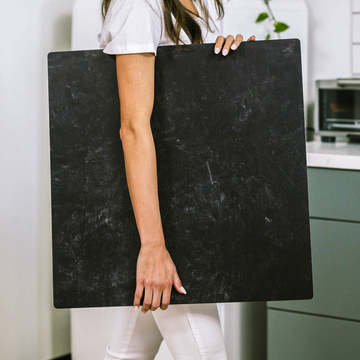Ever finish decorating a stunning cake only to feel underwhelmed by the photos you snap? You’re not alone. It’s easy to blame the camera, but the real secret often lies under the cake itself-your photography backdrop. Beyond color and trend, it’s the subtle texture and surface material of your backdrop that can make or break a mouthwatering cake shot.
Let’s peel back the curtain on cake backdrops and uncover the science behind why micro-textured surfaces make your cakes look their absolute best, transform light, and help you create scroll-stopping images.
More Than Meets the Eye: Why Texture Matters in Cake Photos
Standard paper or glossy vinyl backdrops might look convenient, but when your cake lands in front of one, the image can fall flat. Cake is a 3D masterpiece-soft curves, sharp lines, glossy glaze, and delicate highlights all deserve to be seen in their full glory. Without the right background, your cake can lose its sense of depth and realism.
Micro-textured backdrops, like professional surfaces designed for food photography, feature fine grain and just enough variation to scatter light beautifully, wrapping your cake in soft natural shadows. This visual depth makes the cake look more appetizing and authentic, while preventing harsh glare from wiping out your cake’s subtle details.
- Tip: Texture helps maintain a natural look and feel, bringing your cake’s details-like piping or glossy ganache-to life.
- Flat, glossy backgrounds can create unwanted reflections and make your cake appear artificial.
Material Choices: The Unsung Heroes of Backdrop Design
Modern cake backdrops are much more than easy-to-clean sheets. The best are crafted from engineered composites, mimicking the tactile elegance of marble, concrete, or rustic wood. But it’s the way these materials reflect and scatter light that adds a professional edge to your photography.
- Semi-matte finishes diffuse light to soften contrasting shadows-essential for shiny frostings or vibrant garnishes.
- Some surfaces replicate the subtle translucency of real stone, adding a barely-there glow to every shot.
- Quality matters in the edges too; pro backdrops are laser-cut for clean joins and seamless vertical “wall” setups.
Quick Test for the Curious
Try placing the same cake on three surfaces: plain poster board, textured stone, and unfinished wood. You’ll notice how color, crumb, and topping vibrance shift subtly. The right backdrop makes your cake-the hero-shine.
The Psychology of Visual Cues
Your customer’s first impression is instant and subconscious. The choice of backdrop can nudge them toward “homemade comfort,” “premium treat,” or minimalist elegance long before they read a description. Visual context is powerful marketing.
- A rustic wood background evokes warmth and nostalgia-perfect for classic loaves or spiced cakes.
- Sleek marble leans into luxury, lending sophistication to modern drip cakes or elegant tarts.
- Concrete or neutral stone can make colors pop and keep the focus on inventive decoration.
Undertones matter more than you might expect. A cool-toned marble can make golden cakes glow, while a warm or yellowish base might flatten vibrant hues. For pros, matching undertone to cake style and intended mood is a go-to trick.
Level Up With Angle and Layering
Consider the simple trick of adding a “wall” backdrop behind your cake to create bakery ambience and dimension. When you combine a textured base with a seamless vertical surface, you transport your cake to a photogenic “scene”-think Parisian patisserie or homey farmhouse window.
- Use quality backdrops to ensure clean invisible joins between surfaces.
- Watch for shadow fall and depth; steer clear of surfaces with too much grain or visible seams.
Behind the Scenes: A Real Cake Test
Recently, I shot a tall chocolate drip cake on three different surfaces: plain posterboard, a textured “concrete” replica, and a real slate tile. The results were dramatic. Posterboard emphasized flaws and unwanted glare, while the engineered concrete gave lush shadows and natural depth-even the berries looked juicier. Real slate had too much texture, stealing focus from the cake itself. The winning image came from the surface designed for photography-proving that micro-texture and undertones matter just as much as your recipe.
Your Checklist for Selecting Cake Backdrops
- Invest in micro-textured, pro-grade backdrops for best depth, color, and light control.
- Choose textures and undertones that enhance your cake and brand vibe-rustic, modern, minimalist, or luxurious.
- Try different angles and backgrounds (like vertical “walls”) for dynamic compositions.
- Test and trust your eye. Compare your cake on multiple backdrops-you’ll see which truly makes it shine.
Final Thoughts
Photography is the language your cakes use to meet the world. Don’t let flat, lifeless backgrounds undersell your hard work. By treating your backdrop as a silent partner in your business-a thoughtful choice, not an afterthought-you tell the world: this cake is something special.
Want more behind-the-scenes tips or need help shooting mirror-glaze or whipped cream cakes? Share your questions in the comments below. Let’s help your cakes shine, one thoughtful surface at a time!



